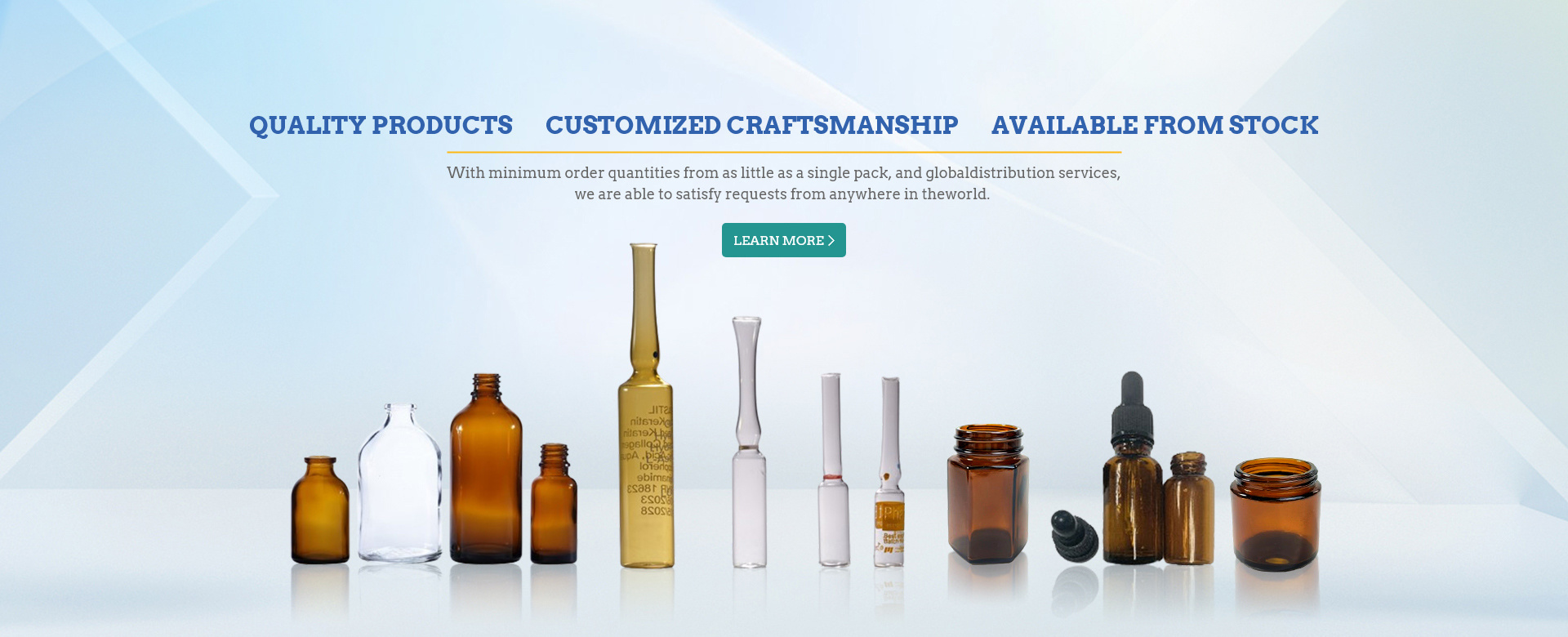Support customization and sample delivery!
How to Choose the Right Primary Packaging for Injectable Drugs
Author:
Munan Glass
Date:
2025-10-27
Read:
Primary glass packaging is no longer a commodity decision. USP <660>, EP 3.2.1 and the new ISO 15378:2021 audit checklist all treat the glass matrix as a critical raw material. This paper compares borosilicate and soda-lime compositions, quantifies chemical durability, extractables and delamination risk, and gives formulators a three-step selection flow-chart that has cut validation time by 30 % in three recent biological launches.

1. Chemical Durability in Numbers
- Hydrolytic resistance (USP <660> surface test, 121 °C, 30 min):
– Borosilicate Type I: 0.05–0.08 mL 0.01 N HCl equivalent
– Soda-lime Type III: 0.25–0.40 mL (5× higher alkali leach)
- pH shift after 6 months 40 °C storage, WFI filled to 90 %:
– Borosilicate: ΔpH +0.15
– Soda-lime: ΔpH +0.65 (crosses USP +0.5 limit)
Conclusion: Any formulation with pH > 7.5 or phosphate/citrate buffer > 50 mM should default to borosilicate.
2. Delamination Risk Model
Munan Glass analysed 1 200 vials (2–20 mL) by SEM-EDS. Delamination flakes (> 5 µm) originated exclusively from the heel region where the glass was reheated for bottom forming.
- Borosilicate: 3–5 flakes per 100 vials
- Soda-lime: 40–60 flakes (ten-fold increase)
The higher Al/Na ratio in soda-lime (0.18 vs. 0.42) creates phase separation when exposed to 300 °C tooling temperature. Ammonium sulfate surface treatment (0.2 µm dealkalised layer) reduced flake count to < 1 per 100 vials in both groups, confirming that chemistry, not geometry, drives delamination.
3. Thermal Shock & Lyophilisation
Coefficient of thermal expansion (20–300 °C):
- Borosilicate: 5.0 × 10⁻⁶ K⁻¹
- Soda-lime: 9.1 × 10⁻⁶ K⁻¹
During a standard lyophilisation cycle (−45 °C ➔ +25 °C shelf in 20 min) finite-element modelling predicts hoop stress of:
- 28 MPa in borosilicate (safety factor 4.3)
- 51 MPa in soda-lime (safety factor 2.1)
Breakage rate in a 100 000-vial batch rose from 0.02 % to 0.38 % when a CMO switched to soda-lime to save €0.012 per vial.
4. No organic extractables were detected above 0.2 ppm in either glass; however, silicon dissolution was 3× higher in soda-lime (2.3 vs. 0.8 ppm), correlating with increased haze after steam sterilisation.
5. Three-Step Selection Flow-Chart
Step 1: Route through borosilicate if any of the following apply:
- pH ≥ 7.5, or citrate/phosphate buffer ≥ 50 mM
- Terminal sterilisation 121 °C ≥ 30 min
- Lyophilisation or cold-chain (−20 °C) transport
Step 2: For simple saline or dextrose solutions at pH 4–7, run a 4-week 60 °C stressed leachable study; accept soda-lime only if alkali increment < 0.2 ppm and visible particles ≤ 5 per 100 vials.
Step 3: Regardless of glass type, demand supplier’s ISO 15378 certificate, DMF Type III reference and surface-treatment protocol (ammonium sulfate or sulfur dioxide).
6. Real-World Case Study
A European CMO moved a monoclonal antibody from a plastic ampoule to 5 mL borosilicate vials (Munan Glass, Type I, COC neck 13 mm). Validation package:
- 3-month accelerated: no sub-visible particles > 10 µm
- Extractables: only Si & B within 5 % of placebo
- Delamination: zero flakes in 500 vials (SEM)
Regulatory feedback: no additional questions on container-closure; filing approved in 82 days versus 115 days for the previous plastic system.
7. Sustainability Footnote
Borosilicate melting point is 200 °C higher, adding 0.8 MJ energy per kilogram of glass. However, its chemical durability allows 50 % post-consumer cullet versus 20 % for soda-lime, cutting overall CO₂ footprint by 18 % when recycled content is considered.
8. Quick Specification Checklist
✓ USP <660> Type I, EP 3.2.1, JP 7.01 conformity
✓ Hydrolytic resistance ≤ 0.1 mL HCl (0.01 N)
✓ Internal surface roughness Ra ≤ 0.05 µm (laser interferometry)
✓ Ammonium-sulfate treated, 0.15–0.25 µm dealkalised layer
✓ DMF Type III on file with FDA
For anything beyond simple, short-term aqueous solutions, borosilicate Type I remains the only glass that simultaneously meets chemical, thermal and regulatory thresholds. The modest cost premium (≈ $0.015 per 2 mL vial) is erased by lower breakage, shorter validation and higher recycling value. Soda-lime can still play a role in OTC oral liquids or single-dose veterinary products, but the decision must be data-driven rather than price-driven.
Related news
Related products
PRODUCT CATEGORY


















